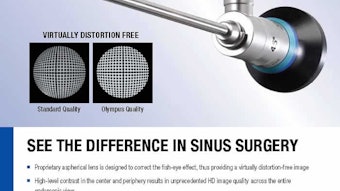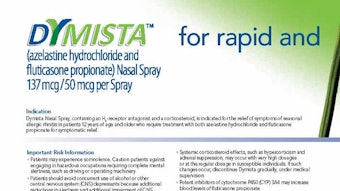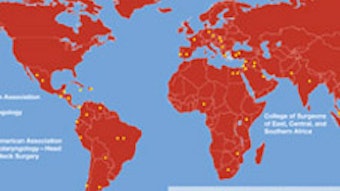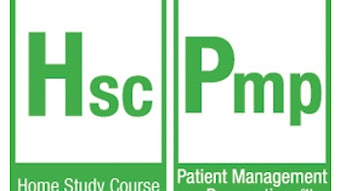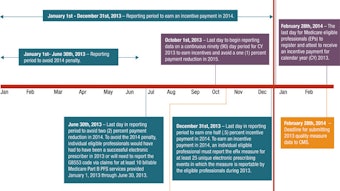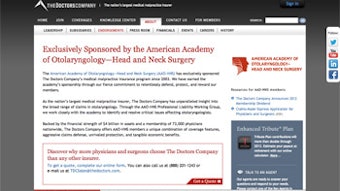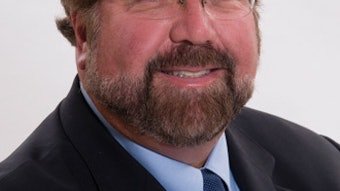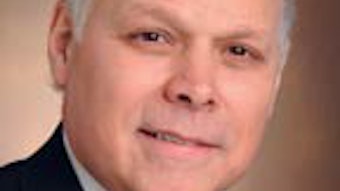Integration Focuses Policy and Action
At the time of this writing, we just completed an interesting week of having a couple of important spotlights on otolaryngology. First, the FDA announced its decision to issue a “box warning” for the use of codeine as an analgesic following tonsillectomy and adenoidectomy in children. Codeine is now contraindicated for this clinical scenario. While we had been communicating this issue to our members for some time, it became official only in February. Because tonsillectomy remains one of the most frequently performed surgeries in the United States, and often involves children, this is a significant announcement. It is beyond the scope of this column to share the details, but the specifics can be found at http://www.FDA.gov/Drugs/DrugSafety/ucm339112.htm. During that same week, the national press conference by the Choosing Wisely® campaign, which included an announcement of the AAO-HNS Foundation’s participation, took place at the Kaiser Family Foundation building in Washington, DC. Our “five things” or tests and treatments otolaryngologists and patients should question about overuse or effectiveness were released to the public. The event was well attended and many news outlets covered the campaign. We received several notices from members who heard the news in their local areas and complimented the Academy on its participation. You can read more atwww.entnet.org/choosing_wisely. While such events are not uncommon, this active week is a further reminder of the integration of the socioeconomic and the clinical. As advocates for our patients, we regard patient safety as paramount. Therefore, with regard to codeine, new data revealing a threat to patient safety is meaningful to us. However, it is challenging to have to abandon a well-established element of care on such short notice. The involvement of the FDA, the flurry of press coverage, and the need to notify doctors, hospitals, pharmacies, allied health providers, and the public demonstrate major advocacy, communications, and health policy challenges. The health policy issue arose from the published scientific and clinical literature combined with the FDA’s own tracking mechanisms for adverse events. Likewise, our participation in the Choosing Wisely® campaign arises from our members’ clinical experience, contributions, and suggestions. A member brought the campaign to our attention. The recommendations were chosen through suggestions from our members, subspecialty societies, Foundation committees, Guidelines Task Force, Patient Safety and Quality Improvement Committee, and others. It is likely that future evidence-based guidelines’ action statements will provide further tests, treatments, or interventions that should be questioned. As future payment models will inevitably be linked to quality improvement, we again see the intersection between advocacy and clinical care. While the Academy/Foundation clinical committees are relatively well known to most of us, the health policy and socioeconomic structure is not. Most of us could sit in on a clinical committee, easily follow the dialogue and discussion, and contribute valued opinion, experience, or judgment. Few of us could attend a RUC (Relative Value Update Committee) or CPT (Current Procedural Terminology) meeting with the same comfort and ability to give relevant input without a lot of coaching, support, and assistance. Most of our members do not know to whom they are indebted for the outstanding manner in which our Physician Payment Policy Work Group (3P) members represent our interests and our specialty in these national venues. This group consists of appointed RUC and CPT representatives and alternates, our Coordinators for Socioeconomic and Practice Affairs, and other members who are engaged in policy in related areas or advancing their skills for future appointment opportunities. Our current Academy structure is designed to better coordinate our efforts for seamless interaction between the socioeconomic and the clinical, research and education, and advocacy. With a single business unit responsible for Health Policy, Regulatory Advocacy, Research, and Quality, we are positioned to anticipate the effect of each element on the other, and to respond more quickly and effectively in advocating for our physician members and their patients’ best interests. Please join me in thanking these tireless individuals who so expertly serve us. CPT Team Bradley F. Marple, MD CPT Advisor Lawrence M. Simon, MD CPT Alternate Advisor RUC Team Charles F. Koopmann, Jr., MD RUC Panel Member Jane T. Dillon, MD RUC Panel Alternate Wayne M. Koch, MD RUC Advisor John T. Lanza, MD RUC Alternate Advisor Pete S. Batra, MD RUC Team Trainee Peter Manes, MD RUC Team Trainee
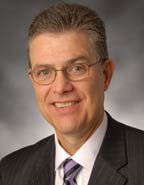 David R. Nielsen, MDAAO-HNS/F EVP/CEO
David R. Nielsen, MDAAO-HNS/F EVP/CEOAt the time of this writing, we just completed an interesting week of having a couple of important spotlights on otolaryngology. First, the FDA announced its decision to issue a “box warning” for the use of codeine as an analgesic following tonsillectomy and adenoidectomy in children. Codeine is now contraindicated for this clinical scenario. While we had been communicating this issue to our members for some time, it became official only in February. Because tonsillectomy remains one of the most frequently performed surgeries in the United States, and often involves children, this is a significant announcement. It is beyond the scope of this column to share the details, but the specifics can be found at http://www.FDA.gov/Drugs/DrugSafety/ucm339112.htm.
During that same week, the national press conference by the Choosing Wisely® campaign, which included an announcement of the AAO-HNS Foundation’s participation, took place at the Kaiser Family Foundation building in Washington, DC. Our “five things” or tests and treatments otolaryngologists and patients should question about overuse or effectiveness were released to the public. The event was well attended and many news outlets covered the campaign. We received several notices from members who heard the news in their local areas and complimented the Academy on its participation. You can read more atwww.entnet.org/choosing_wisely.
While such events are not uncommon, this active week is a further reminder of the integration of the socioeconomic and the clinical. As advocates for our patients, we regard patient safety as paramount. Therefore, with regard to codeine, new data revealing a threat to patient safety is meaningful to us. However, it is challenging to have to abandon a well-established element of care on such short notice. The involvement of the FDA, the flurry of press coverage, and the need to notify doctors, hospitals, pharmacies, allied health providers, and the public demonstrate major advocacy, communications, and health policy challenges. The health policy issue arose from the published scientific and clinical literature combined with the FDA’s own tracking mechanisms for adverse events.
Likewise, our participation in the Choosing Wisely® campaign arises from our members’ clinical experience, contributions, and suggestions. A member brought the campaign to our attention. The recommendations were chosen through suggestions from our members, subspecialty societies, Foundation committees, Guidelines Task Force, Patient Safety and Quality Improvement Committee, and others. It is likely that future evidence-based guidelines’ action statements will provide further tests, treatments, or interventions that should be questioned. As future payment models will inevitably be linked to quality improvement, we again see the intersection between advocacy and clinical care.
While the Academy/Foundation clinical committees are relatively well known to most of us, the health policy and socioeconomic structure is not. Most of us could sit in on a clinical committee, easily follow the dialogue and discussion, and contribute valued opinion, experience, or judgment. Few of us could attend a RUC (Relative Value Update Committee) or CPT (Current Procedural Terminology) meeting with the same comfort and ability to give relevant input without a lot of coaching, support, and assistance. Most of our members do not know to whom they are indebted for the outstanding manner in which our Physician Payment Policy Work Group (3P) members represent our interests and our specialty in these national venues. This group consists of appointed RUC and CPT representatives and alternates, our Coordinators for Socioeconomic and Practice Affairs, and other members who are engaged in policy in related areas or advancing their skills for future appointment opportunities.
Our current Academy structure is designed to better coordinate our efforts for seamless interaction between the socioeconomic and the clinical, research and education, and advocacy. With a single business unit responsible for Health Policy, Regulatory Advocacy, Research, and Quality, we are positioned to anticipate the effect of each element on the other, and to respond more quickly and effectively in advocating for our physician members and their patients’ best interests. Please join me in thanking these tireless individuals who so expertly serve us.
CPT Team
- Bradley F. Marple, MD CPT Advisor
- Lawrence M. Simon, MD CPT Alternate Advisor
RUC Team
- Charles F. Koopmann, Jr., MD RUC Panel Member
- Jane T. Dillon, MD RUC Panel Alternate
- Wayne M. Koch, MD RUC Advisor
- John T. Lanza, MD RUC Alternate Advisor
- Pete S. Batra, MD RUC Team Trainee
- Peter Manes, MD RUC Team Trainee
